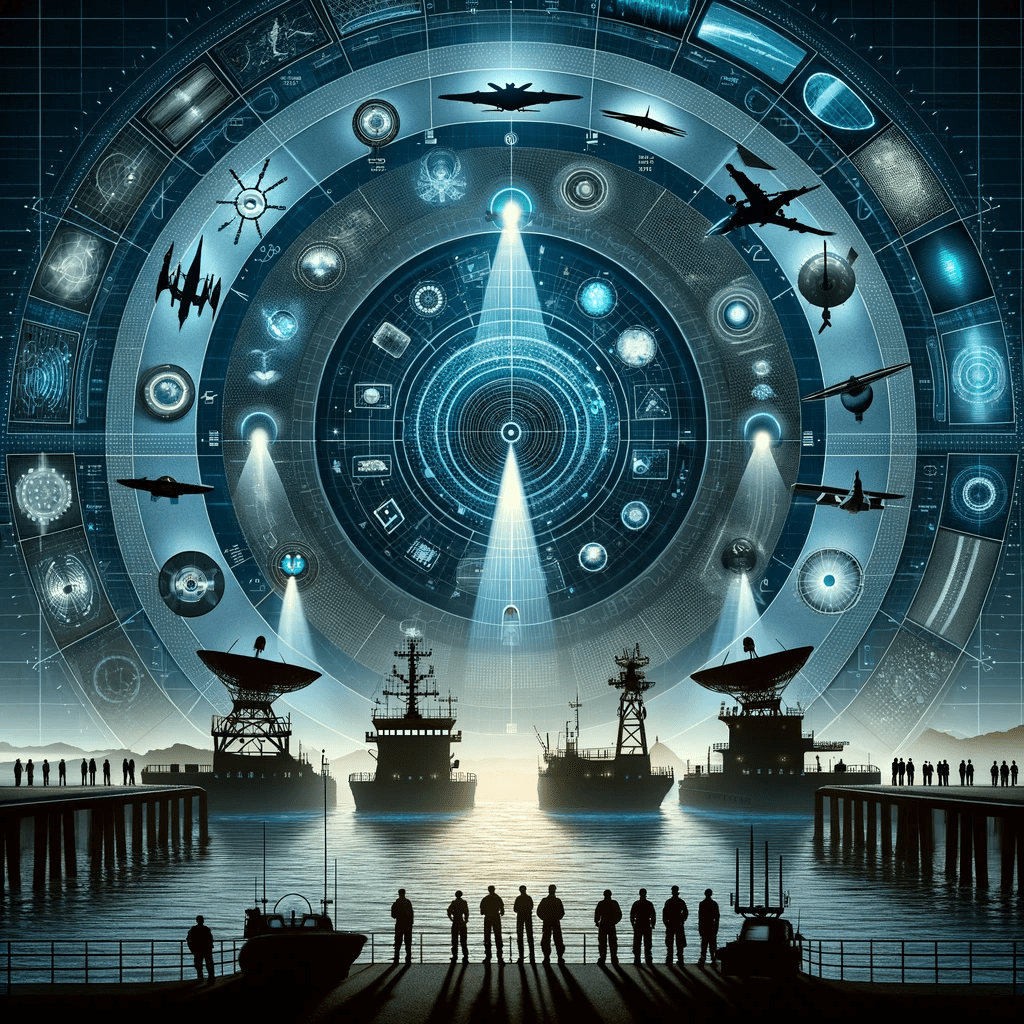Detection Technologies: Monitoring UFOs and UAPs in North American Skies and Waters

In recent years, there has been a surge of interest in the study of Unidentified Flying Objects (UFOs) and Unidentified Aerial Phenomena (UAPs), fueled by numerous sightings and encounters across North America. The need for effective detection and monitoring technologies is essential to understanding and analyzing these unexplained occurrences.
Various technologies and sensors can be employed to monitor the skies and bodies of water for any unidentified or anomalous objects. Some of these technologies include:
- Radar Systems: Radar (Radio Detection and Ranging) systems are widely used to detect and track the location of objects in the sky, including potential UFOs and UAPs. Both military and civilian radar systems can detect unexplained aerial phenomena.
- Infrared (IR) Sensors: Infrared sensors can detect the heat signature of objects, making them useful for spotting unidentified objects that may emit heat.
- Electro-Optical (EO) Sensors: These sensors use visible and infrared light to capture images, allowing for the detection of objects in various lighting conditions.
- Lidar (Light Detection and Ranging): Lidar systems use lasers to measure distances and create detailed, high-resolution maps of the environment. Lidar can detect and track objects in the sky or under the water.
- Sonar Systems: Sonar (Sound Navigation and Ranging) systems are used to detect and track underwater objects, making them useful for monitoring unidentified objects in lakes and oceans.
- Radio Frequency (RF) Detectors: These detectors can pick up radio signals emitted by objects, including potential UFOs and UAPs.
- Magnetometers: Magnetometers measure the Earth’s magnetic field and can be used to detect anomalies caused by the presence of metallic objects or other disturbances.
- Gravimeters: These devices measure variations in the Earth’s gravitational field, which can be used to detect the presence of large, dense objects.
- Seismometers: Seismometers detect vibrations in the Earth’s crust, allowing them to detect objects that impact the ground or cause disturbances underwater.
- Satellites: Earth observation satellites equipped with high-resolution cameras and various sensors can be used to monitor large areas for unusual activity.
- Multi-Sensor Platforms: Advanced platforms like drones, balloons, or aircraft equipped with various sensors can be deployed to investigate specific areas or incidents.
- Acoustic Sensors: These devices can detect sound waves produced by objects in the atmosphere or underwater. They can be used to identify unusual sounds or vibrations that might be associated with unidentified objects.
- Spectrometers: Spectrometers analyze the electromagnetic spectrum of light to identify the chemical composition of objects. They can be used to study the properties of unidentified objects and determine if they have unique or unusual characteristics.
- Optical Telescopes: Ground-based and space-based optical telescopes can be used to observe the sky for potential UFOs or UAPs. By using different filters and observing techniques, astronomers can detect and analyze objects that might be otherwise invisible to the naked eye.
- Video and Photographic Cameras: High-resolution cameras with various lenses and filters can capture images and video of unidentified objects. Some specialized cameras, such as those with high-speed capabilities or those capable of capturing images in low light conditions, can be particularly useful for detecting and analyzing unusual aerial phenomena.
- Atmospheric Sensors: Devices that measure atmospheric parameters like temperature, humidity, and pressure can help identify unusual environmental conditions that might be associated with UFOs or UAPs.
- Particle Detectors: These instruments can detect and measure subatomic particles, such as cosmic rays or neutrinos. While not specifically designed for UFO or UAP detection, they might be able to identify unusual particle signatures associated with unexplained phenomena.
- Amateur Observers and Citizen Science: Enthusiasts and researchers can collaborate through citizen science projects to report and investigate sightings of unidentified objects. These collective efforts can help gather valuable data and information on potential UFOs and UAPs.
It’s important to note that while these technologies can be used to detect unidentified objects, they are not specifically designed for UFO or UAP detection. Additionally, their effectiveness may vary based on factors like weather conditions, location, and the characteristics of the unidentified objects.
A diverse array of technologies and sensors is available for detecting and monitoring UFOs and UAPs in North American skies and waters. These tools, when used in conjunction or as part of a larger network, can provide valuable data and insights into the nature of unidentified objects and phenomena.

